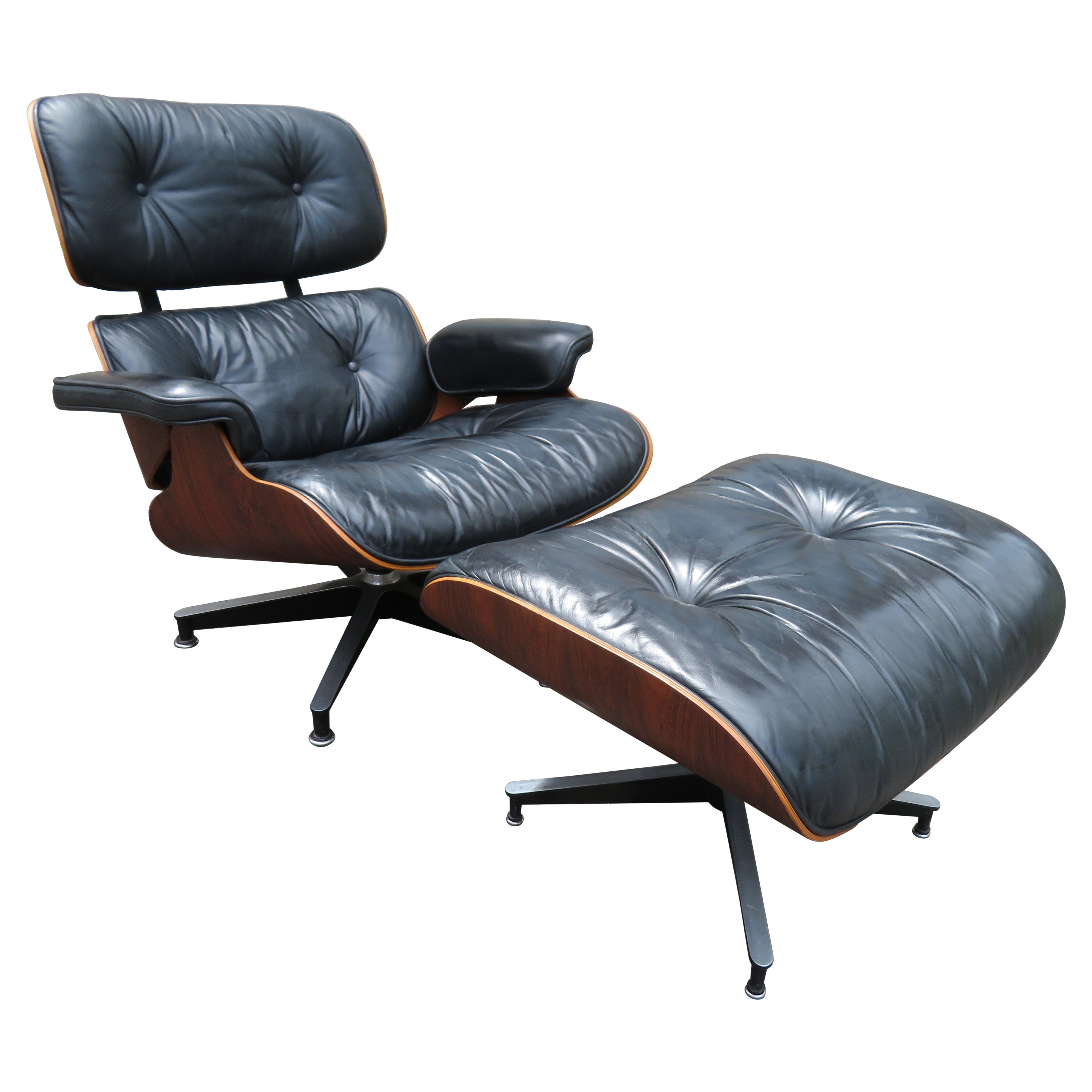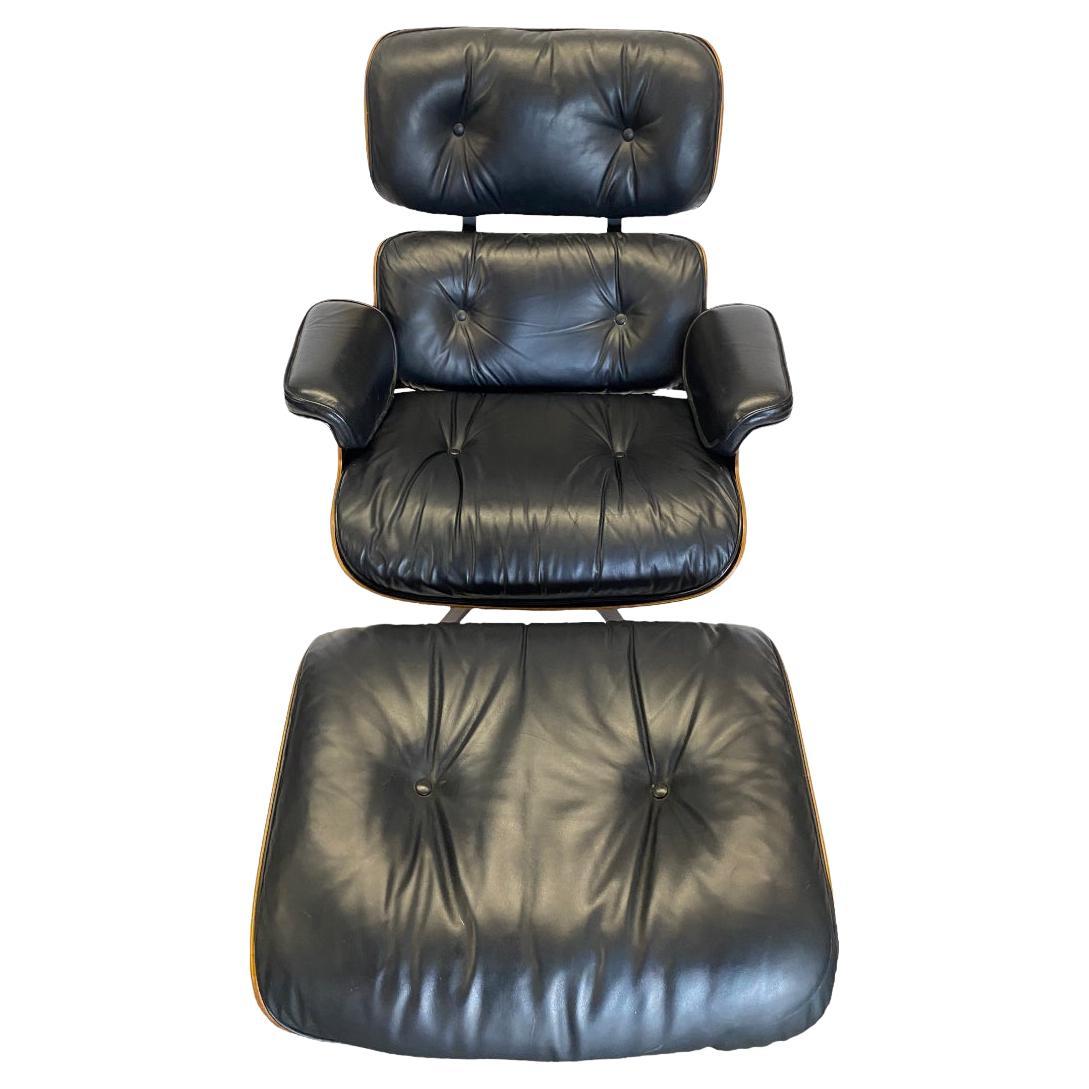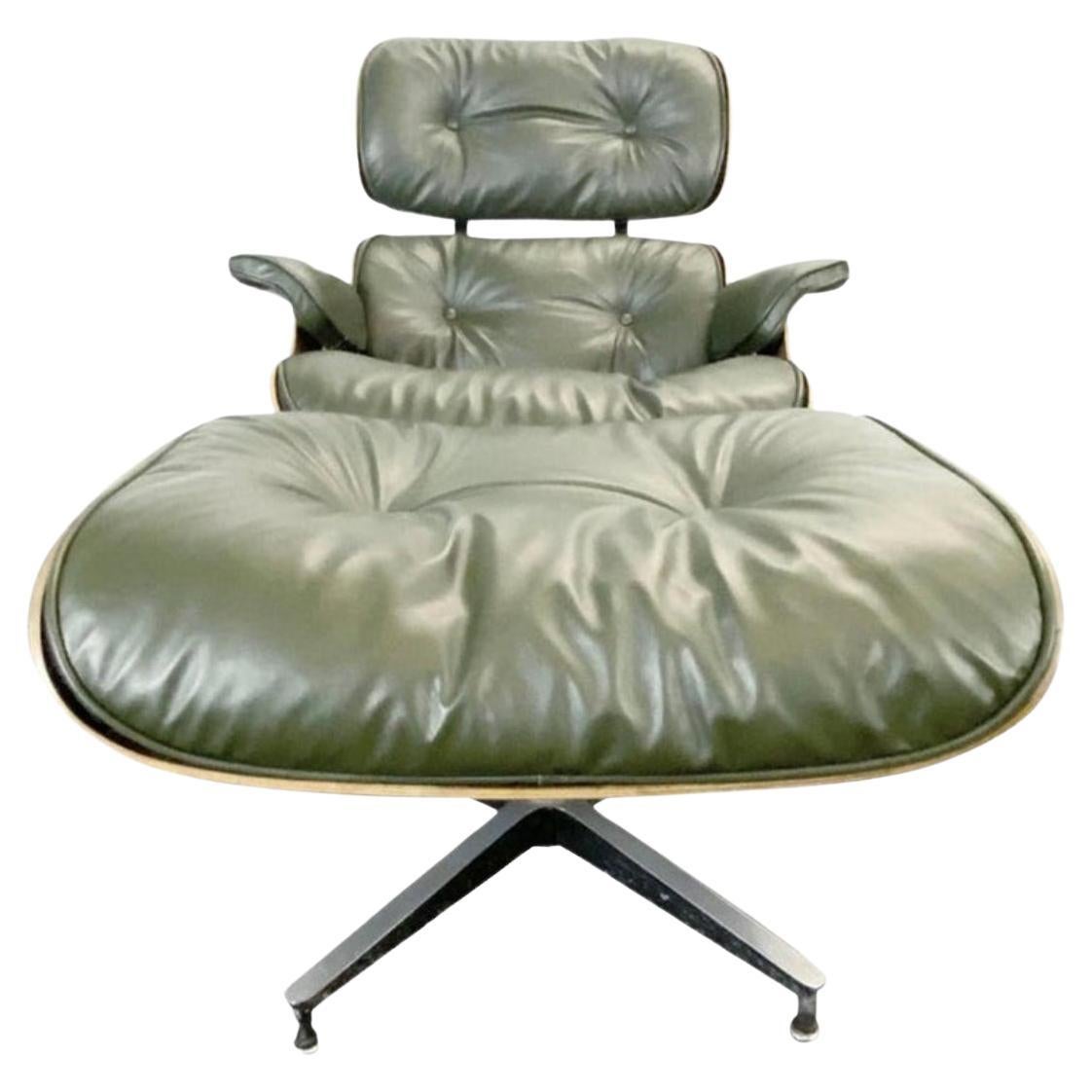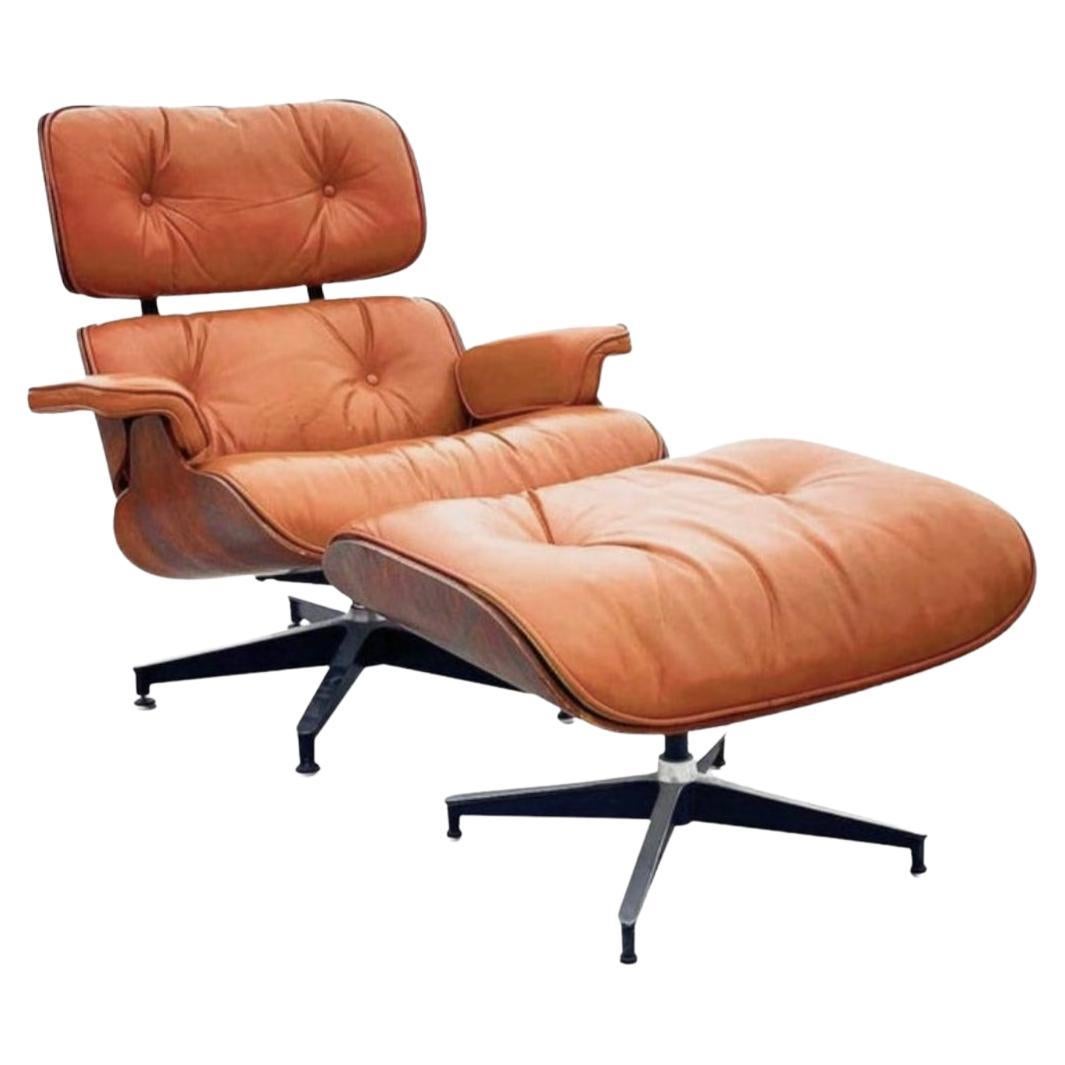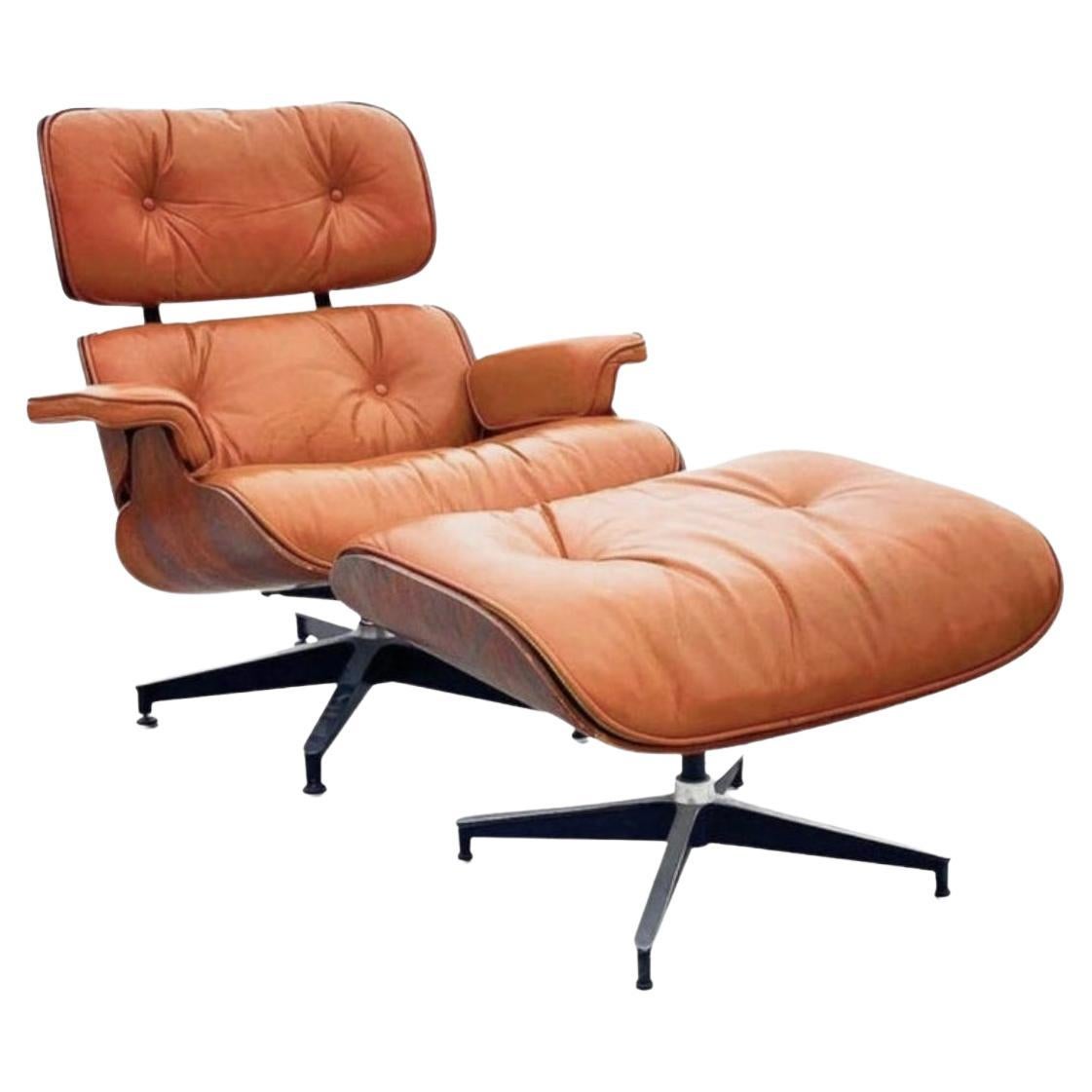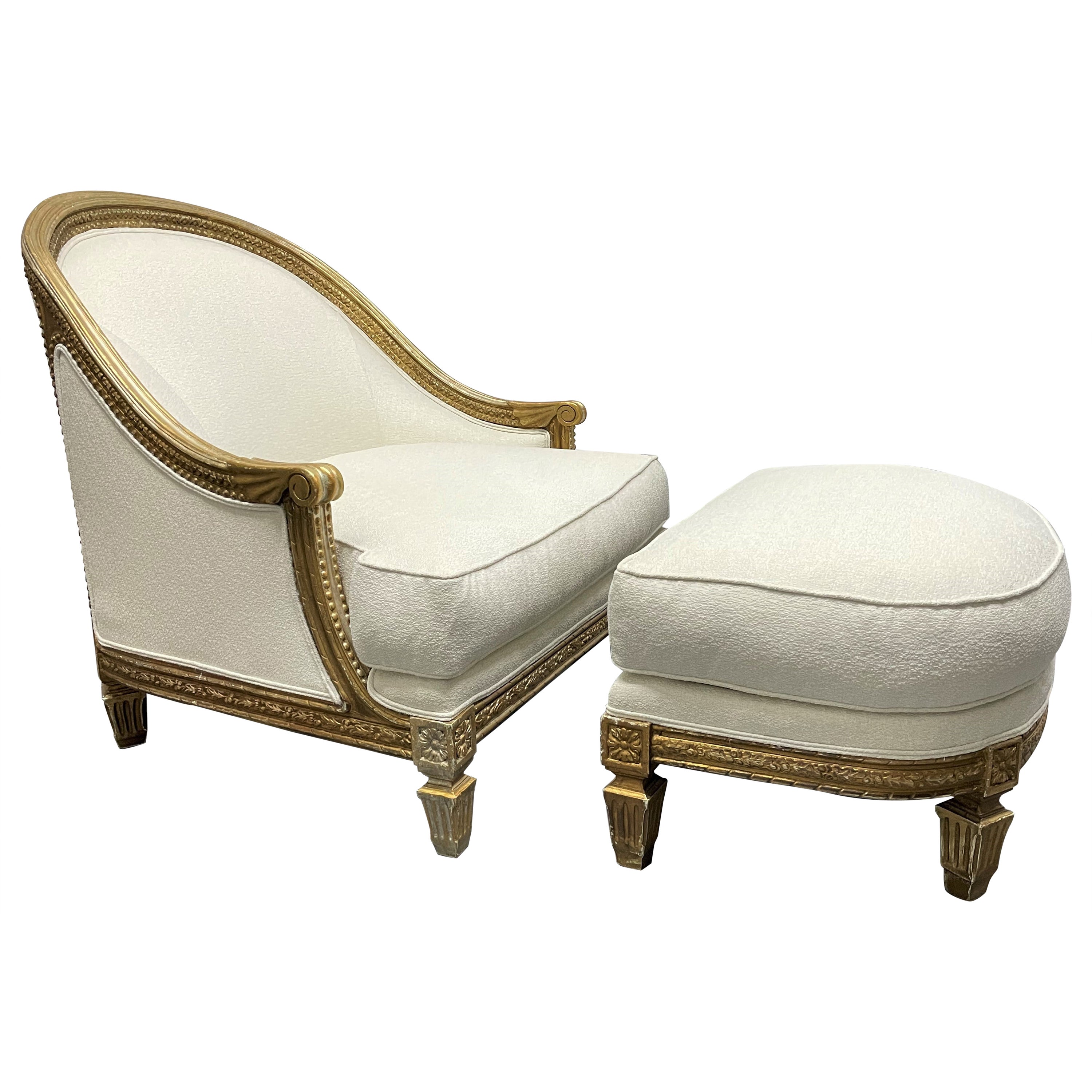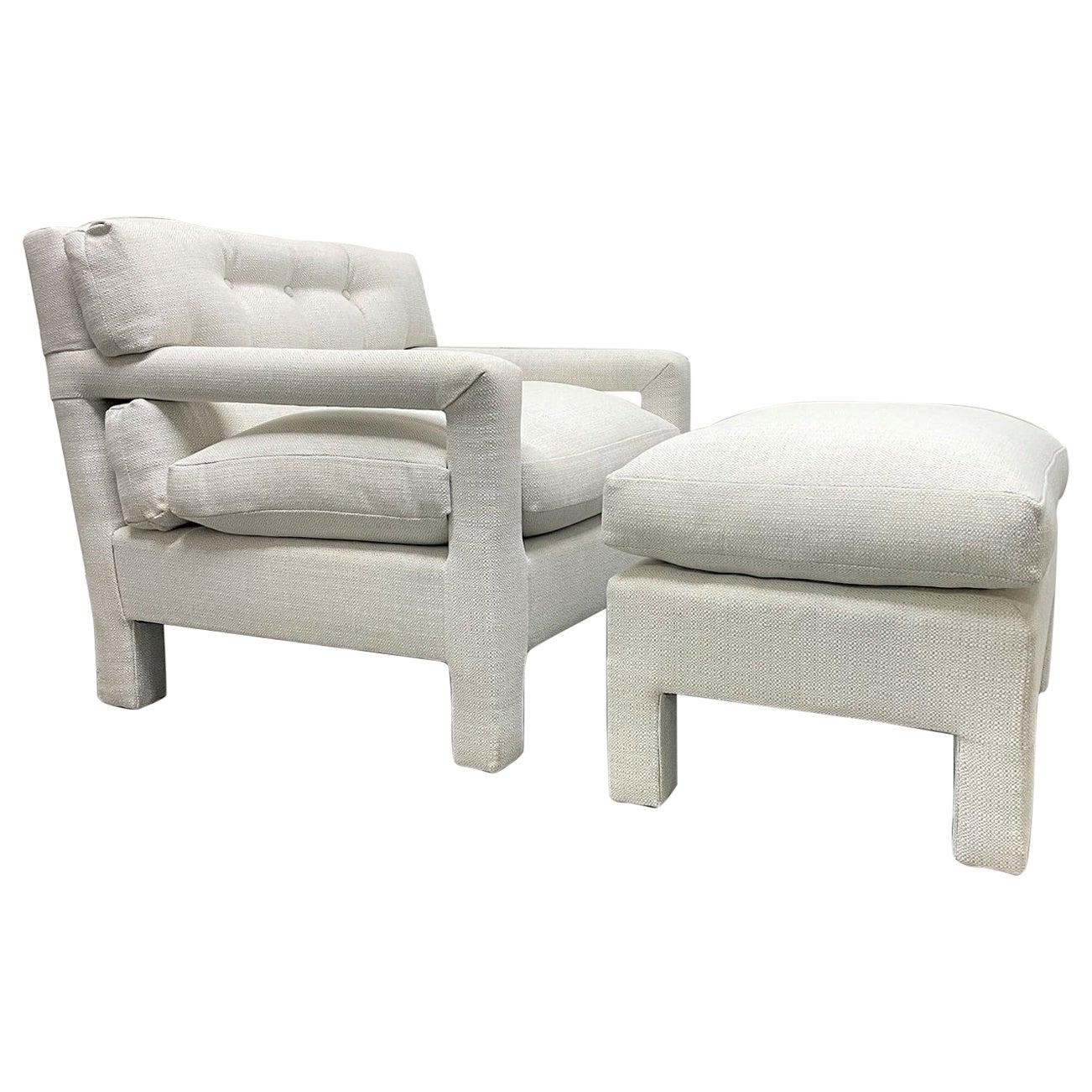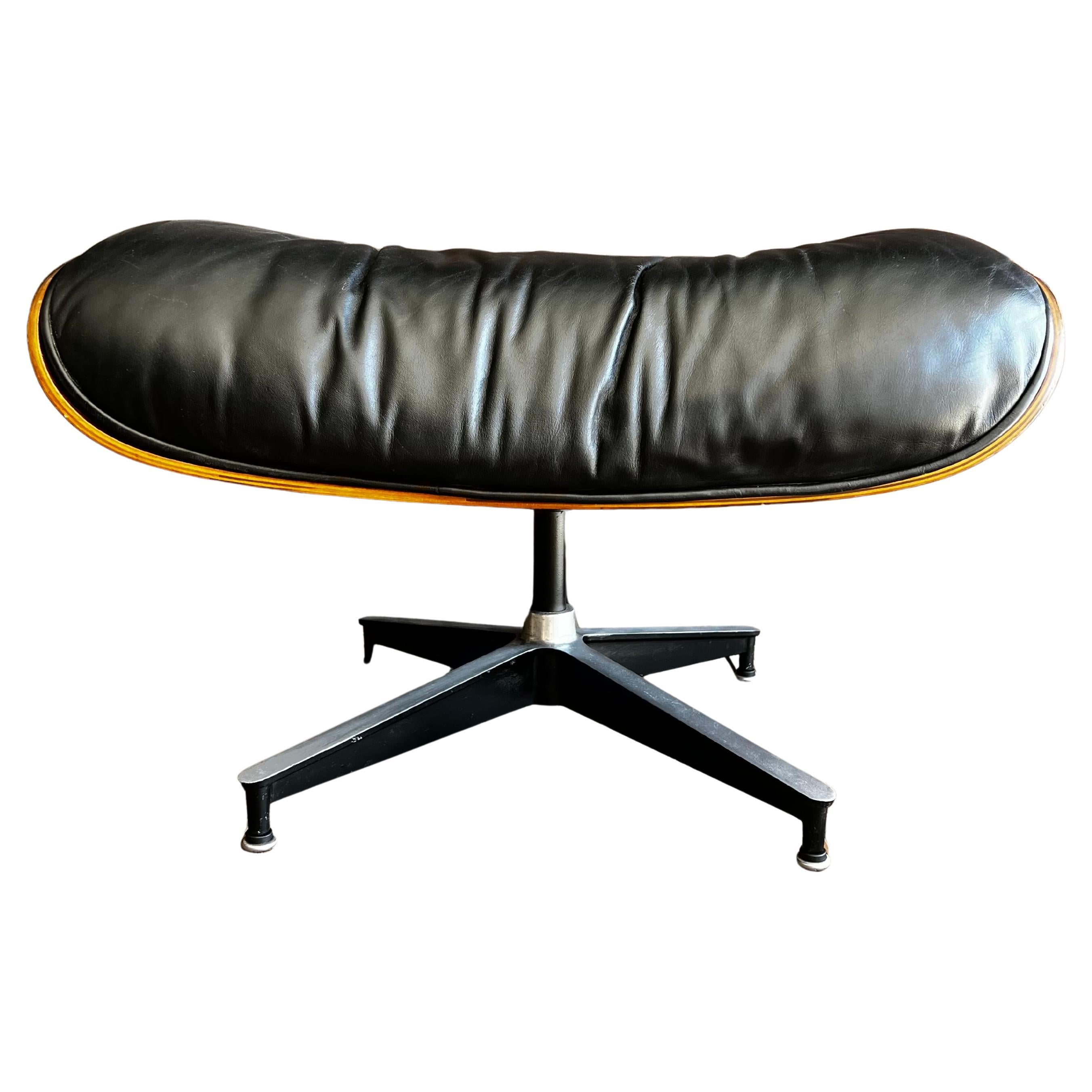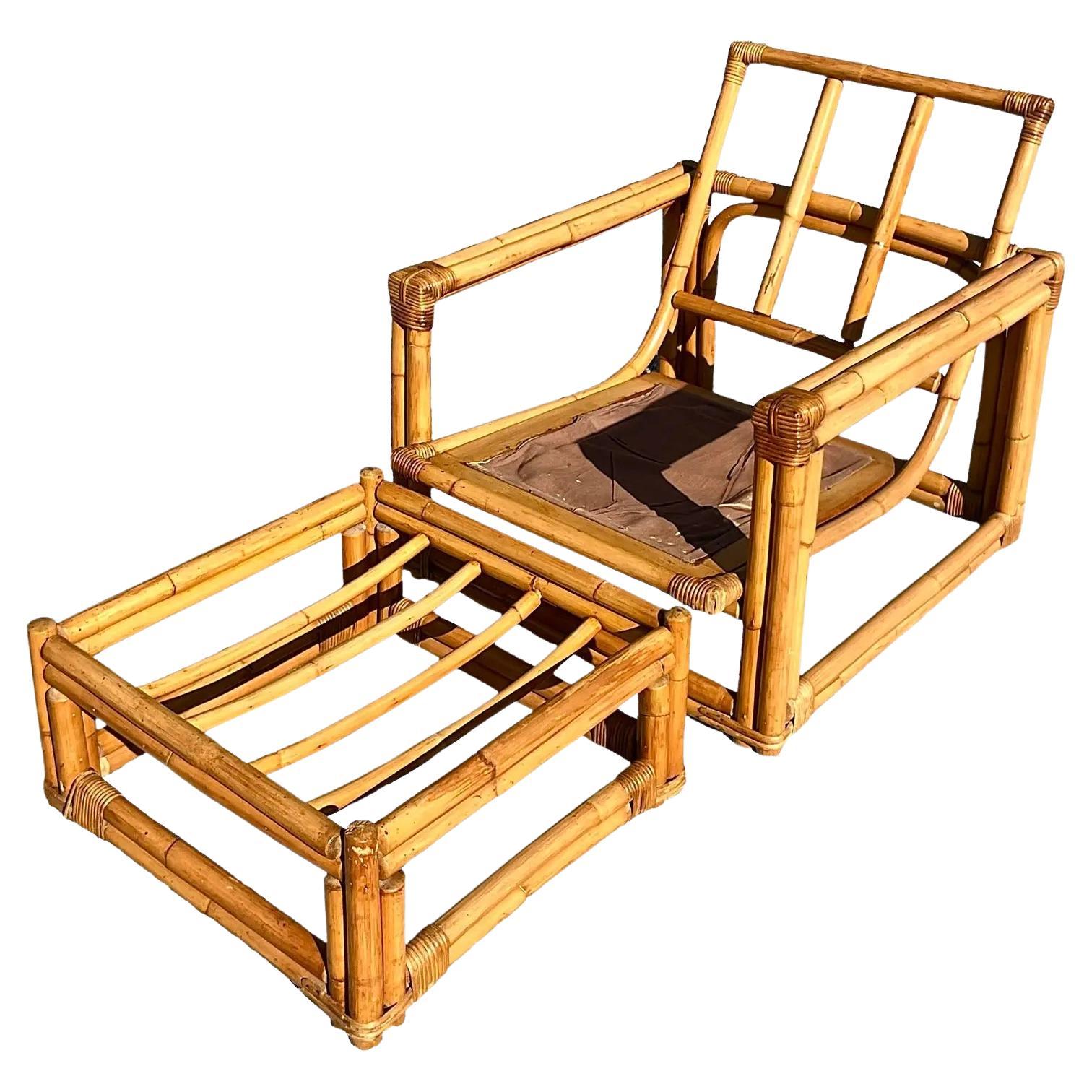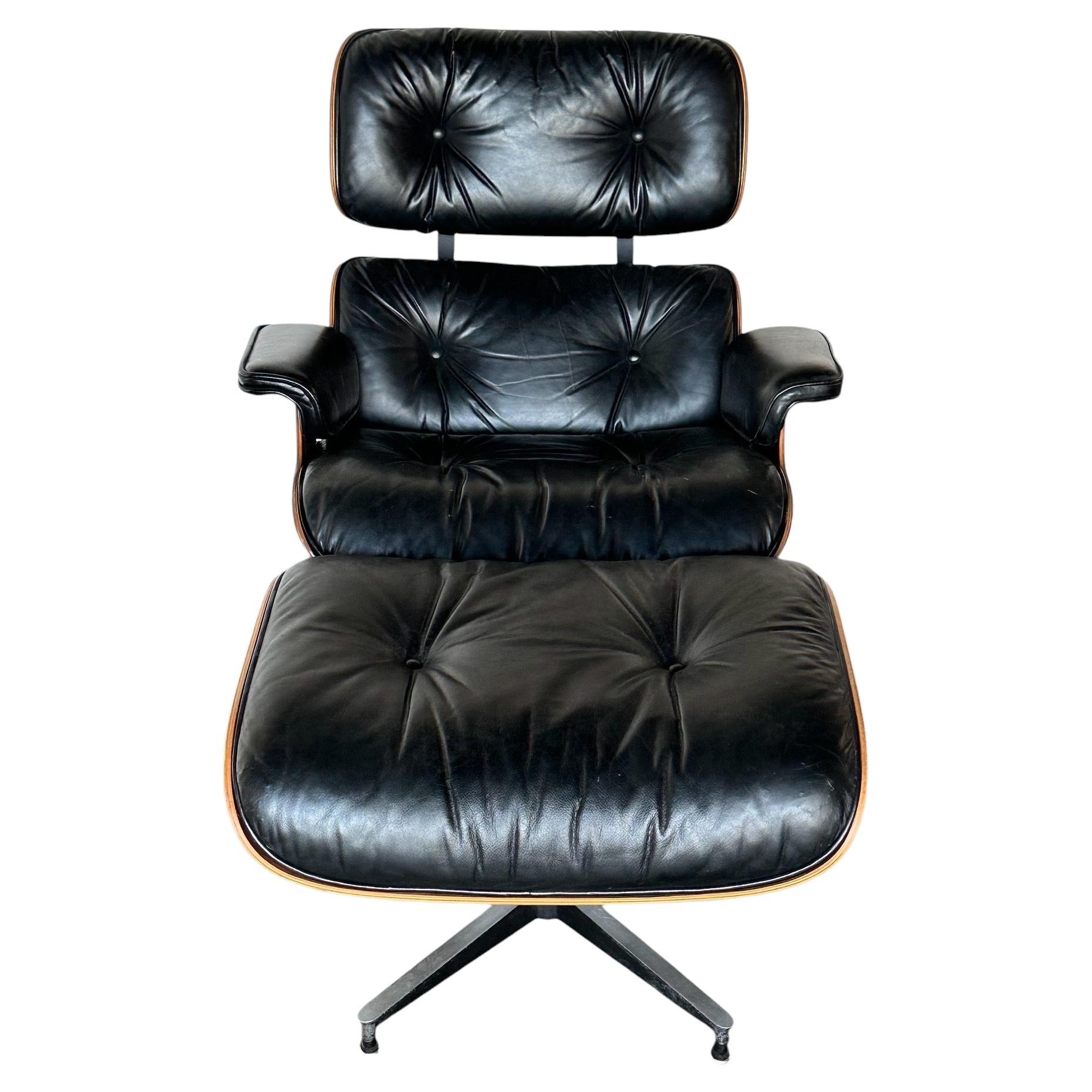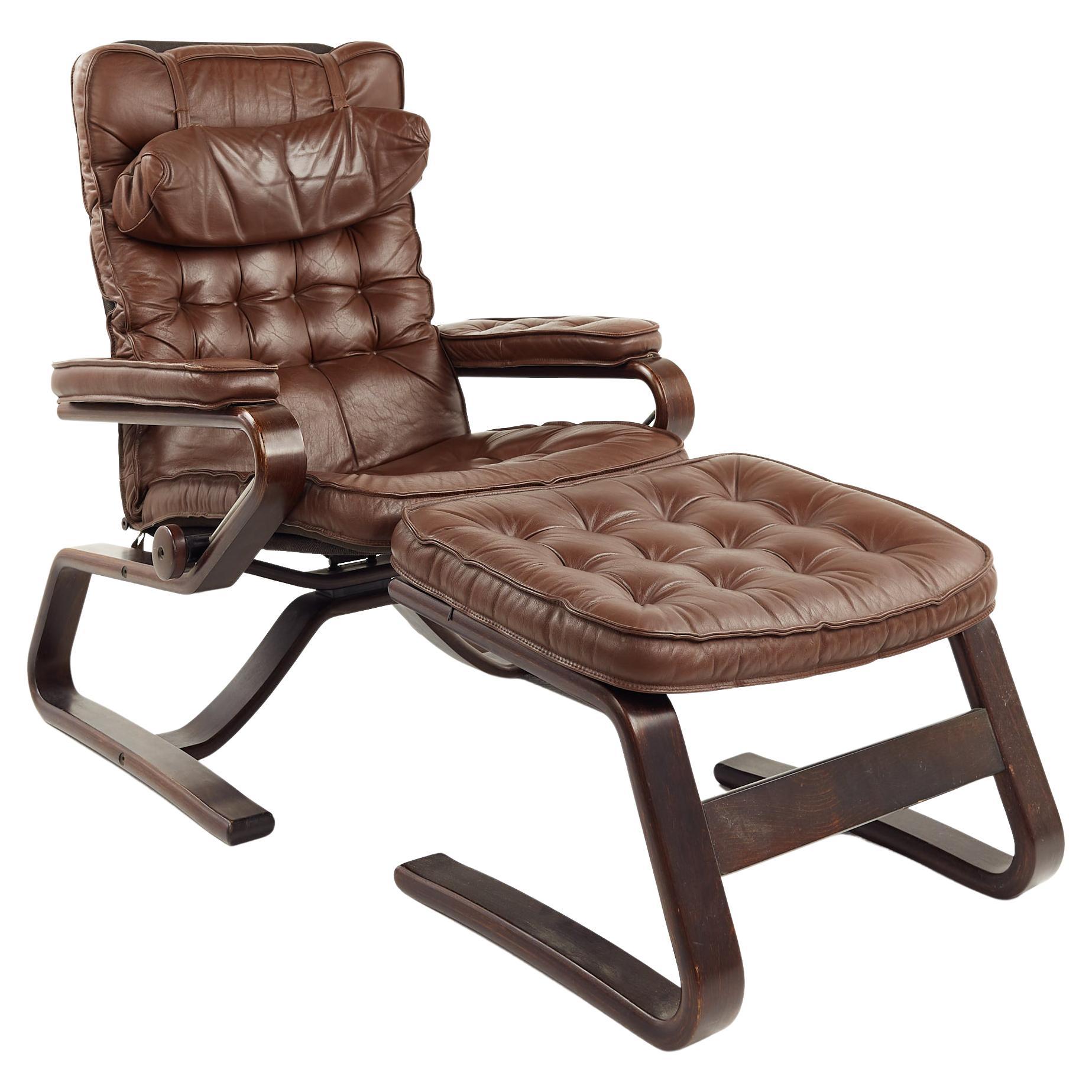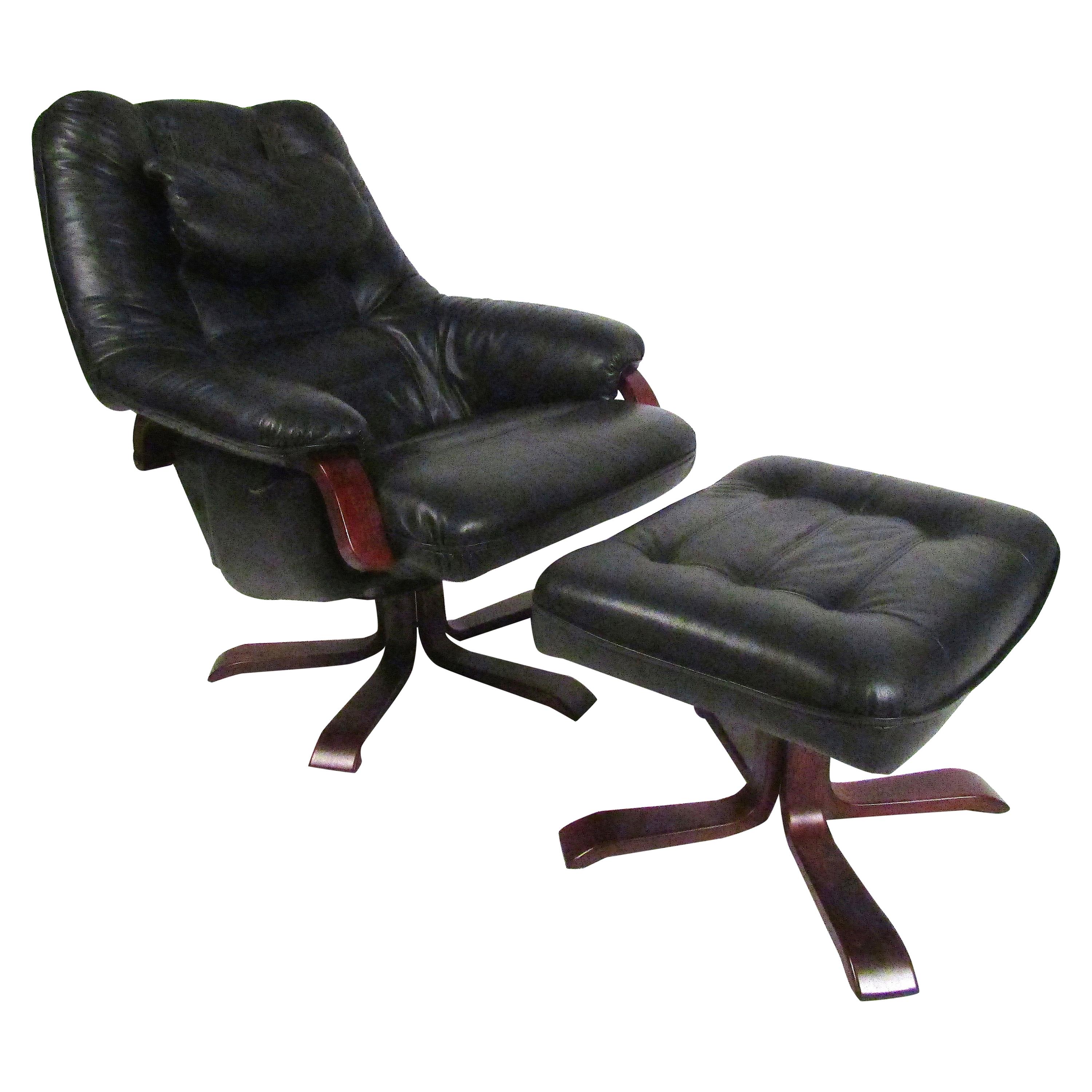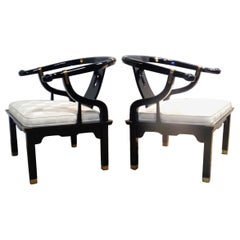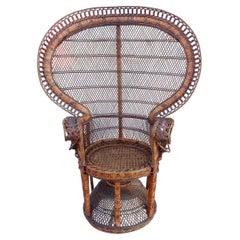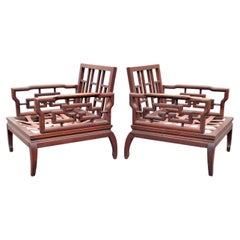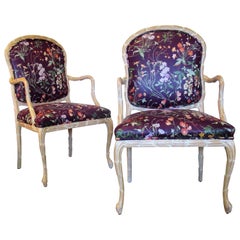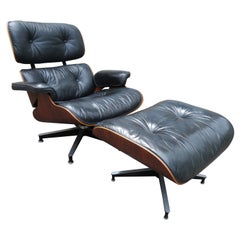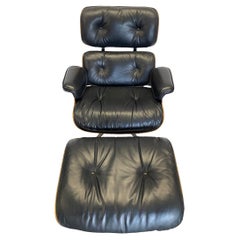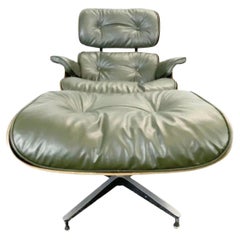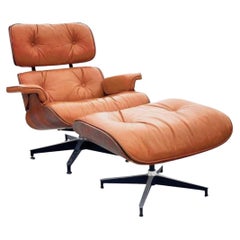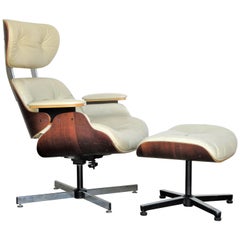
Vintage Eames Style Lounge Chair and Ottoman
View Similar Items
Want more images or videos?
Request additional images or videos from the seller
1 of 21
Vintage Eames Style Lounge Chair and Ottoman
Price:$1,000
$1,250List Price
About the Item
- Attributed to:Plycraft (Manufacturer)
- Similar to:Charles and Ray Eames (Designer)Herman Miller (Manufacturer)
- Dimensions:Height: 39.25 in (99.7 cm)Width: 32 in (81.28 cm)Depth: 27 in (68.58 cm)Seat Height: 17 in (43.18 cm)
- Sold As:Set of 2
- Style:Mid-Century Modern (Of the Period)
- Materials and Techniques:
- Place of Origin:
- Period:
- Date of Manufacture:circa 1960-1970
- Condition:Wear consistent with age and use. structurally solid. wood w/ no losses / beautifully aged color walnut veneer. chromed steel good w/ no pitting. vintage vinyl upholstery pretty decent w/ light wear fine scratch losses part of seat / arms - img 16. replaced screw to ottoman.
- Seller Location:Rochester, NY
- Reference Number:1stDibs: LU961123905432
About the Seller
4.9
Vetted Professional Seller
Every seller passes strict standards for authenticity and reliability
1stDibs seller since 2013
905 sales on 1stDibs
Typical response time: 15 hours
Authenticity Guarantee
In the unlikely event there’s an issue with an item’s authenticity, contact us within 1 year for a full refund. DetailsMoney-Back Guarantee
If your item is not as described, is damaged in transit, or does not arrive, contact us within 7 days for a full refund. Details24-Hour Cancellation
You have a 24-hour grace period in which to reconsider your purchase, with no questions asked.Vetted Professional Sellers
Our world-class sellers must adhere to strict standards for service and quality, maintaining the integrity of our listings.Price-Match Guarantee
If you find that a seller listed the same item for a lower price elsewhere, we’ll match it.Trusted Global Delivery
Our best-in-class carrier network provides specialized shipping options worldwide, including custom delivery.More From This Seller
View AllJames Mont Style Black Lacquered Horsehoe Back Lounge Chairs by Century
By Century Furniture, James Mont
Located in Rochester, NY
Pair of Asian modern black lacquered horseshoe back lounge chairs with brass fittings by Century Furniture Company. All original beautiful glowing condition. Style of James Mont. Ci...
Category
20th Century American Ming Lounge Chairs
Materials
Brass
Emmanuelle Wicker Peacock Chair Circa 1970
Located in Rochester, NY
Emmanuelle Peacock Chair in beautifully aged original rich surface color patina. Circa 1970. Look at all pictures and read condition report i...
Category
Mid-20th Century Bohemian Lounge Chairs
Materials
Rattan, Wood, Wicker
Pair Asian Ming Style Carved Mahogany Lounge Chairs, 1940-1960
Located in Rochester, NY
A very elegant pair of Asian Ming style hand carved mahogany hardwood lounge chairs in nicely aged original surface color w/ beautifully figured grain. Exceptional quality finely det...
Category
20th Century Singaporean Ming Furniture
Materials
Hardwood, Mahogany
Faux Bois Carved Wood Armchairs
By Century Furniture
Located in Rochester, NY
A pair of pale whitewashed faux bois carved wood armchairs with beautifully aged original surface color by Century Furniture Company. Circa 1970. Look at all pictures and read condit...
Category
20th Century Hollywood Regency Armchairs
Materials
Wood, Fabric
$750 / set
Fratelli Reguitti Valet Chair Style of Ico Parisi, 1950-1960
By Fratelli Reguitti, Ico Parisi
Located in Rochester, NY
Fratelli Reguitti valet chair in original glazed cerused pale oak w/ brass fittings. Two brass rods w/ ball ends at top extend out to hold ties, belts. The synthetic woven rope seat ...
Category
Vintage 1950s Italian Mid-Century Modern Coat Racks and Stands
Materials
Brass
Old Painted Wood & Riveted Metal Campaign Style Folding Chair / Stool
Located in Rochester, NY
Wood and metal campaign style folding chair in as found beautifully aged deep green and red paint w/ great old alligatored surface. Metal riveted hinges / metal riveted top rail / ca...
Category
Early 20th Century American Campaign Chairs
Materials
Metal
You May Also Like
Vintage Rosewood Charles Eames 670 Lounge Chair & 671 Ottoman for Herman Miller
By Charles and Ray Eames
Located in Pemberton, NJ
A very clean example of a vintage modern icon. Charles Eames 670 & 671 Lounge chair and an ottoman produced by Herman Miller. Beautiful striations in...
Category
Vintage 1980s American Mid-Century Modern Lounge Chairs
Materials
Leather, Rosewood
$8,800 Sale Price / set
20% Off
Herman Miller Eames Lounge Chair and Ottoman
By Herman Miller, Charles and Ray Eames
Located in Brooklyn, NY
Handsome classic Eames lounge chair and ottoman. Executed in rosewood and black leather. Cast aluminum bases, with adjustable “domes of silence” leveling glides. Extremely comfortabl...
Category
Mid-20th Century American Mid-Century Modern Lounge Chairs
Materials
Aluminum
Gorgeous Avocado Eames Lounge Chair and Ottoman
By Herman Miller, Charles and Ray Eames
Located in Brooklyn, NY
Not a color you see often! A classic Eames lounge chair and ottoman with vintage wood and metal components outfitted in brand new leather cushions in Avocado shade. 3-4 week producti...
Category
Mid-20th Century American Mid-Century Modern Lounge Chairs
Materials
Leather
Eames Lounge Chair and Ottoman in Burnt Orange
By Herman Miller, Charles and Ray Eames
Located in Brooklyn, NY
Beautiful custom edition of the iconic Eames lounge chair and ottoman. Rosewood shells and aluminum bases cradle the custom burnt orange leather cushions. New leather very soft and i...
Category
20th Century American Mid-Century Modern Lounge Chairs
Materials
Leather
Eames Lounge Chair and Ottoman in Burnt Orange
By Herman Miller, Charles and Ray Eames
Located in Brooklyn, NY
Beautiful custom edition of the iconic Eames lounge chair and ottoman. Rosewood shells have been restored and cradle the custom burnt orange leather cushions. New leather very soft a...
Category
20th Century American Mid-Century Modern Lounge Chairs
Materials
Leather
Ralph Lauren Antique Style Lounge Chair and Ottoman
Located in New York, NY
Ralph Lauren antique style lounge chair and ottoman. The frame of the chair and ottoman is giltwood. Chair and ottoman is newly upholstered.
Meas...
Category
Vintage 1980s Neoclassical Lounge Chairs
Materials
Upholstery, Giltwood
Recently Viewed
View AllMore Ways To Browse
Herman Miller Eames Stacking Chairs
Eames Style Ottoman
Plycraft Eames Chair
Plycraft Eames
Plycraft Eames Lounge
Herman Miller Bentwood
Plycraft Eames Style Lounge Chair
France And Son Lounge Chair
Lawson Wood
Lounge Chairs With Casters
Mies Van Der Rohe Barcelona Chair
80s Lounge Chairs
Eames Lounge Aluminium
Lounge Chair Set Italy 1960s
Mid Century Sling Back Chairs
Risom Walnut Chair
Danish Leather Chair Strap
Fritz Hansen Space Chair
